No products in the cart.
NEWS
How to Grow Grapes Successfully: A Complete Guide
Many aspiring gardeners believe growing grapes is a daunting task, reserved only for seasoned vintners. The truth is, cultivating your own delicious grapes is surprisingly achievable right in your backyard! With the correct guidance on climate selection, essential care practices, and a little dedication, anyone can enjoy a bountiful grape harvest. This guide from Biogarden.Asia provides expert insights into successful grape growing, covering everything from choosing the right varieties to managing common issues and harvesting your fruit.
Getting Started: Choosing the Right Site and Variety
Successful grape growing begins with proper planning. Selecting the right location and grape variety is paramount to your vineyard’s (or even just a few vines’) success.
Finding a location that provides ample sunlight is crucial. Grapevines thrive in full sun, ideally receiving at least 6-8 hours of direct sunlight daily. This maximizes fruit production and helps prevent disease by keeping the foliage dry. Well-drained soil is equally important, as grapevines are susceptible to root rot in waterlogged conditions. Consider amending heavy clay soils with organic matter to improve drainage. A site protected from harsh winds and late spring frosts is also beneficial.
Variety Selection
Choosing the right grape variety is perhaps the most critical decision, as suitability varies greatly by climate.
- Intended Use: Are you growing table grapes for fresh eating, wine grapes for making wine, or juice/jelly grapes? Varieties are often specialized for these purposes (as highlighted in discussions around different types of grapes, wine grapes, and best varieties for jelly/jam).
- Climate Adaptation: Select varieties known to perform well in your specific region. Consider factors like cold hardiness (for regions with freezing winters) and heat or drought tolerance (where summers are hot and dry). While some varieties are more drought-tolerant than others, consistent watering is still necessary, especially for young plants and developing fruit.
- Seedless vs. Seeded: Most home gardeners prefer seedless varieties for convenience, but seeded types are often used for juice, jelly, and wine.
Understanding the characteristics of different types of grapes available will significantly increase your chances of a successful harvest.
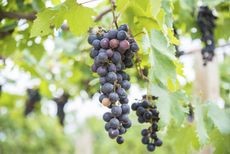 Assortment of different colored and shaped grape varieties displayed together
Assortment of different colored and shaped grape varieties displayed together
Planting Your Grapevines
Grapevines are typically planted during the dormant season, usually in late winter or early spring, before the buds begin to swell. Prepare the planting site by digging a hole large enough to accommodate the root system comfortably, typically 12 inches deep and 12 inches wide. Mix compost or other organic matter into the soil removed from the hole to improve fertility and drainage.
Carefully remove the grapevine from its container or packaging, spreading the roots out gently. Place the vine in the hole so that the top roots are just below the soil surface. Backfill the hole with the amended soil, gently firming it to remove air pockets. Water thoroughly immediately after planting to settle the soil.
Essential Grapevine Care Practices
Once planted, consistent care is key to establishing healthy, productive grapevines.
Support Structures
Providing adequate support for your grapevines is non-negotiable. Grapevines are vigorous climbers and need structures like trellises, arbors, or wire systems to grow vertically.
 Strong wooden trellis supporting an established grapevine in a home garden
Strong wooden trellis supporting an established grapevine in a home garden
Supporting the vines keeps the foliage and fruit off the ground, significantly improving air circulation. This helps reduce the incidence of fungal diseases. Support systems also make pruning, harvesting, and managing the vines much easier.
Pruning
Pruning is arguably the most important maintenance task for grapevines, particularly during the dormant season. Proper pruning removes old, unproductive wood and encourages the growth of new canes that will bear fruit in the upcoming season. It also helps manage the vine’s size and shape, ensuring good light penetration and air circulation within the canopy. While specific techniques vary by grape type and training system, understanding the fundamental principles of pruning is essential for maximizing fruit yield and quality while maintaining vine health.
Watering
Consistent moisture is vital for grapevines, especially during their establishment phase and when the fruit is developing. Deep, infrequent watering is generally preferred over shallow, frequent watering, encouraging roots to grow deeper into the soil. While some grape varieties exhibit greater drought tolerance, prolonged dry spells can stress the vines and negatively impact fruit production and quality. Monitoring soil moisture and watering as needed, particularly during hot, dry periods, is crucial.
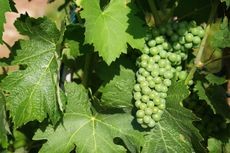 Small grape bunches growing on a grapevine in seemingly dry conditions, indicating drought tolerance
Small grape bunches growing on a grapevine in seemingly dry conditions, indicating drought tolerance
Fertilization
Grapevines benefit from appropriate fertilization, but over-fertilizing can be detrimental. Young vines typically need nitrogen to support vegetative growth. As vines mature and begin producing fruit, a balanced fertilizer containing phosphorus and potassium may also be necessary. Observing your vines for signs of nutrient deficiencies, such as the yellowing leaves characteristic of chlorosis, can help determine fertilization needs. Soil testing is also recommended to understand your soil’s specific requirements.
Pollination
A common question is whether grapevines require cross-pollination. Fortunately, most common grapevine varieties grown for fruit are self-fruitful, meaning they can pollinate themselves and produce fruit without another variety nearby. While some varieties might benefit from cross-pollination, a single self-fruitful vine is sufficient for fruit production.
 Close-up view of small grape flowers indicating grapevine pollination
Close-up view of small grape flowers indicating grapevine pollination
Thinning
Thinning grapes, which involves removing some flower clusters or young fruit bunches, may seem counterintuitive, but it’s a valuable technique for improving the quality and size of the remaining grapes.
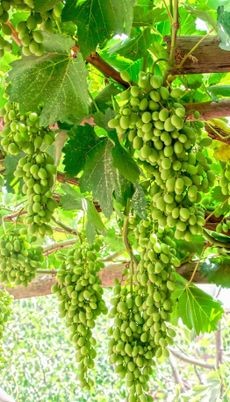 Lush green grape bunches hanging from a healthy grapevine
Lush green grape bunches hanging from a healthy grapevine
Thinning prevents the vine from becoming overloaded, ensuring that the plant’s energy is directed towards developing fewer, but larger and higher-quality, bunches. It also helps improve air circulation within the clusters, reducing disease risk.
Propagation
For those looking to expand their vineyard or share favorite varieties, rooting grapevines from cuttings is a popular and effective propagation method. Taking cuttings from healthy, dormant canes and providing the right conditions for root development allows you to grow new vines identical to the parent plant.
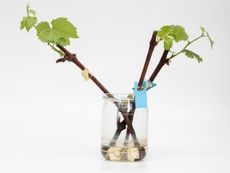 Grapevine cuttings developing roots in a jar of water for propagation
Grapevine cuttings developing roots in a jar of water for propagation
Managing Pests and Diseases
Healthy grapevines are more resilient to pests and diseases, but being aware of common issues and how to address them is important.
Maintaining good air circulation through proper pruning and support structures, along with keeping the area around the vines clean, are excellent preventative measures. However, grapevines can still be susceptible to various problems.
Pests
Mites, like grapevine bud mites, are tiny pests that can damage buds and foliage, impacting vine vigor and yield. Identifying pest issues early and implementing appropriate control measures, which may include beneficial insects or targeted treatments, is crucial.
Diseases
Fungal and viral diseases pose significant threats to grapevines. Examples include Armillaria Root Rot, Crown Gall, Grapevine Fanleaf Degeneration, and Grapevine Leafroll Virus.
- Crown Gall: Caused by bacteria, resulting in tumor-like swellings (galls) usually at the base of the vine or on canes. It can girdle the vine, reducing vigor or even causing death. Selecting certified disease-free planting stock and avoiding injury to the lower trunk helps prevent it.
 Visible crown gall swelling on the lower trunk of a grapevine
Visible crown gall swelling on the lower trunk of a grapevine
Grapevine Fanleaf Degeneration: A viral disease causing distorted leaves (often fan-shaped), yellowing patterns, and reduced vigor and yield. It is typically spread by nematodes or infected propagation material.
Grapevine Leafroll Virus: Another widespread viral disease characterized by the downward rolling of leaves and discoloration (red or purple in red varieties, yellow in white varieties) in the fall. It reduces fruit quality and yield and is primarily spread through infected planting material or mealybugs.
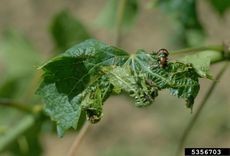 Grapevine leaf showing characteristic downward rolling and reddish discoloration symptoms of leafroll virus
Grapevine leaf showing characteristic downward rolling and reddish discoloration symptoms of leafroll virus
- Armillaria Root Rot: A fungal disease affecting the roots, leading to vine decline, yellowing leaves, and eventual death. It is often associated with infected soil or old infected wood left in the ground.
Recognizing symptoms of these diseases is the first step. Prevention through choosing healthy stock and maintaining good vineyard hygiene is the best strategy, as many viral diseases have no cure and infected vines may need to be removed.
Understanding Grapevine Bleeding
Observing sap dripping from pruning cuts, often in late winter or early spring, can be startling. This phenomenon is known as grapevine bleeding.
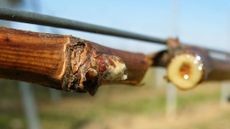 Clear sap dripping or bleeding from a pruning cut on a grapevine cane
Clear sap dripping or bleeding from a pruning cut on a grapevine cane
It occurs as the soil warms and roots become active before bud break, pushing sap up the vascular system. While it might look concerning, it is a natural process and generally harmless to the vine.
Harvesting Your Bounty
The most exciting part of growing grapes is the harvest! Knowing when to harvest is key, as grapes do not continue to ripen after being picked.
Timing depends on the grape variety and your intended use. Look for signs of ripeness, including color change (grapes should be fully colored for their variety), taste (sweetness level increases as they ripen), and texture (softening slightly). For table grapes, taste is often the best indicator. For wine or juice, measuring sugar content (Brix) is common.
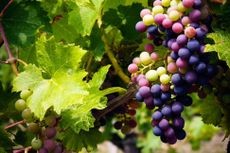 Vibrant bunches of grapes at various stages of ripening on the vine
Vibrant bunches of grapes at various stages of ripening on the vine
Harvest grapes by cutting the bunches from the vine with clippers, being careful not to damage the spur or cane they are attached to.
Beyond the fruit, grapevine leaves are also edible and used in various cuisines, notably for wrapping dishes like dolmades. Harvesting leaves should be done when they are young, tender, and free from pesticides or diseases.
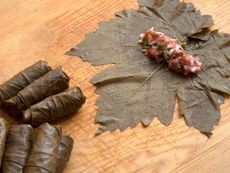 Hands holding large, healthy grape leaves used for wrapping food
Hands holding large, healthy grape leaves used for wrapping food
Beyond Fresh Eating: Using Your Grapes
Your homegrown grapes can be enjoyed in many ways beyond eating them fresh off the vine. Depending on the variety you chose, they can be transformed into delicious juice, homemade jelly or jam, or even wine.
 Bunches of ripe grapes suitable for making jelly or jam
Bunches of ripe grapes suitable for making jelly or jam
Making raisins from homegrown grapes is also possible, typically involving drying the harvested grapes in the sun or a dehydrator until they shrivel and sweeten.
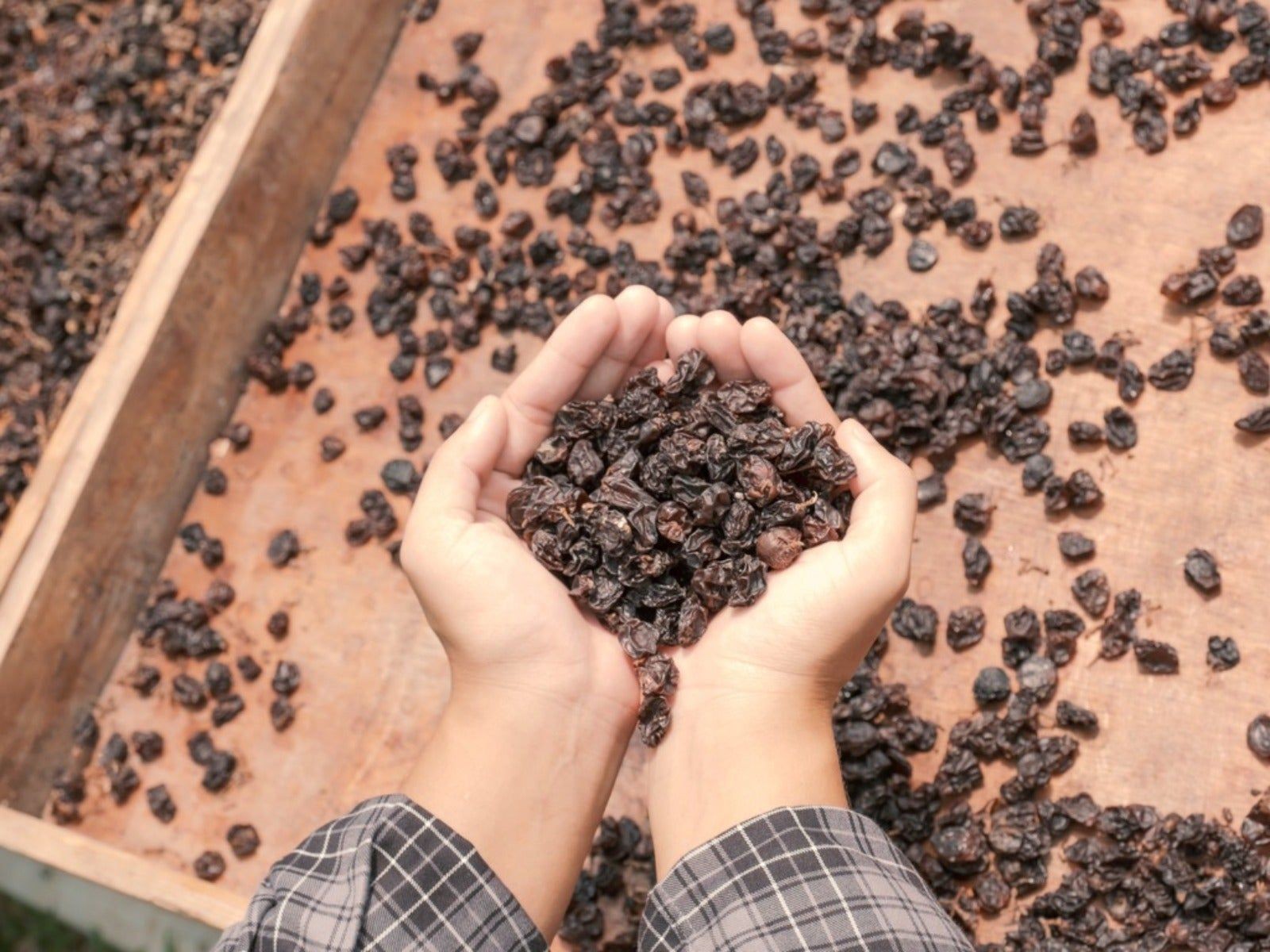 Hands scooping sun-dried raisins from a wooden surface after harvesting grapes
Hands scooping sun-dried raisins from a wooden surface after harvesting grapes
Conclusion
Growing your own grapes is a rewarding experience, offering delicious fruit, beautiful foliage, and the satisfaction of nurturing a productive plant. While it requires attention to detail, especially regarding pruning, support, and pest/disease management, the result is well worth the effort. By understanding the needs of your grapevines and providing consistent care, you can enjoy bountiful harvests for years to come. Explore the range of gardening essentials and support products available at Biogarden.Asia to help your grapevines thrive, and share your grape growing journey with us!



